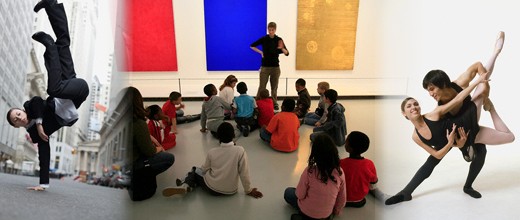Website sections:
Current section's content:
- You Can Manage and Program Creativity
- Creative Abilities and Creative Thinking Skills Management
- Briefly About CreativityModel Method Usage
- CreativityModel Method Usage Opportunities and End-User License Agreement
- Current Version of CreativityModel Method
- CreativityModel Method Abstract
- CreativityModel Method Version Changes
- CreativityModel Method Glossary
- Explanation of the Method's Component Parts and How the Component Parts Interact
- Explanation of How the Method's User Achieves Results
- CreativityModel Method - Generate Dots, Connect the Dots
- CreativityModel Method Usage Areas
- The Artist in You
- Growth of the Artist in You
- The Result Getter in You
- Applying the Result Getter in You
- About Choice Supported Creativity Usage
- The Problematic Side of Business Creativity
- Creativity Management and Business Creativity
- Sales CRM Software Development Example
- Why Does Creativity Management Matter and What Can You Do About This?
- Goal Oriented Creativity Management and CreativityModel Method
- Goal Oriented Creativity Management and Your Personal and Professional Life
- Teenager, Version 1 - Confusion
- Teenager, Version 2 - Career Development and Life Management
- Managers, Version 1 - Zigzagging Business Development
- Managers, Version 2 - Innovation Management and New Product and Service Development
- The President, Version 1 - Some of It Did Happen
- The President, Version 2 - Self-Expression, Conflict Resolution, Creativity and Leadership
- CreativityModel Method Development Background
- Further Development of CreativityModel Method




















Creativity Management and Business Creativity
Contents
- We Are In This Together
- Which Creative Approach To Choose?
- One Creative Approach Versus Another
We Are In This Together
What happens in business environment, when a person who needs to achieve specific objectives doesn't achieve them, or when the goals that are being achieved are different than those that would benefit other employees and the rest of the company or organization?
In addition to, perhaps, having to handle some unpleasant situations, opportunities are usually lost. In many instances, that loss affects more than one person, and it can affect people both professionally and personally. The bigger is that person's sphere of influence who caused the loss, the bigger tends to be the group of people who are affected by the loss.
The same applies when a workgroup, or a department, or a company does not achieve its objectives.
The ripple effects are widespread. No matter who you are, it is likely, that you personally both have been and will be affected by such losses.
Often, there are complex reasons behind the problems. However, one issue, that seems to be creating problems surprisingly often, is that choice based creativity is used in circumstances where goal oriented creativity is needed.
The above statement may seem irrelevant, or trivial at first, but consider this: We all have limited amounts of resources available, like, for example, time and energy. If in business environment we spend those limited resources on going in different directions, one direction after another, instead of moving towards establishing and achieving meaningful goals, then we simply use up the resources, without achieving sufficient returns on our investments.
Better alternatives are available. We don't necessarily have to change much about what we do, in order to improve the outcome quite a bit.
Starting with the next part, Which Creative Approach To Choose?, this article addresses the relevant topics and looks at how other people's choices affect you - and your choices can affect others. We start with some theory, then provide a practical example, and then look at some of the things that you can do about all of this.
Which Creative Approach To Choose?
So, what does creativity have to do with project failures in business environment?
Unlike the Choice Based Creative Approach, the Goal Oriented Creative Approach focuses on establishing and achieving goals efficiently and effectively. Goal oriented creativity is used for building a goal oriented structure for the project.
The two approaches are complementary. Choice based creativity can, and should be used on as needed bases for generating alternative elements within the goal oriented structure of the project.
If you are working on an artistic-creative project, or if inventing something new is the project's main objective, then applying the Choice Based Creative Approach to the overall project development process may be a very good idea. Of course, in that case you also have to allocate resources, including time, accordingly - or, if you don't allocate enough resources, you may have to compromise on the quality of the outcome quite a bit, including accepting the probability that the outcome will not be sufficiently usable for the intended purposes.
Most business and organizational projects, including most computer application development projects, do require combinations of goal oriented efficiency and creativity - that is, combinations of the two approaches described here. However, in most instances the project does have goals that need to be achieved and project development-related efficiency and effectiveness are important. This means, that the project itself should be developed so, that it is based on the Goal Oriented Creative Approach.
Problems arise, when the choice based, creativity-oriented approach is used in situations that actually require goal, efficiency and effectiveness-focused handling. Either directly or indirectly, these problems create negative domino effects. In business environment, the bigger the project, the less likely it is that after achieving less than optimal results we can simply start over. So, it is better for all of us, if we learn to recognize early on the signs of trouble, and then do what we can, to minimize the probability that such situations will develop into actual problems.
One Creative Approach Versus Another
Let's start with reviewing the theory, and then proceed with a more practical example.
Usually it's easier to figure out what conditions need to be met for achieving some immediate results, than it is to put together ways for achieving longer term objectives or goals. Both the choice based and goal oriented creative project development approaches involve this principle's usage, but it is applied very differently.
The Choice Based Creative Approach can be used for an entire project's development, or for development of goal-oriented projects individual aspects or parts. When the Choice Based Creative Approach is being used, the project participant or participants can work on the project's elements (theme, structure and components) in any order they like. Additionally, the Choice Based Creative Approach is about developing a project further in any direction the project participants want. How much freedom the participants have for generating the project's structural parts and components varies, depending on the project-specific rules, guidelines that have been established for the project and on the participants tolerance for ambiguity.
To illustrate this, lets say that we are in point A - the project's starting point. Using the Choice Based Creative Approach, next point could be either B1, or B2, or B3 and so on, where B1, B2 and B3 all can be either slightly or radically different. The possible steps that will follow, can be even more different from each other. The project's overall development can zigzag and proceed in countless different directions.
Pooling in particular necessitates steps, that from the prospective of the goal oriented approach seem wasteful, but may help to increase the artistic or innovative qualities of the project.
The Goal Oriented Creative Approach is about using the goals for defining which steps should be taken. Project development steps are put together from the last to the first, and carried out in the opposite direction. Project development structure can be modified as needed, and choice based creativity can be used for generating alternative components, so that best options can be chosen. However, the overall project development approach should remain goal oriented.
To illustrate this, lets say that our goal is point Z - the project's completion point. We will have to figure out what is the point Y that precedes point Z, then the point X that precedes point Y, and so on, until the beginning of the project. "We need to achieve Z, therefore, we need to do Y," and so on.
Z, Y and X can be groups of steps, that we will then break down into smaller steps. That is, we can identify the project's structure first, and then fill the structural parts with components.
We will put the project development plan together from the last step toward the first one and will carry out the plan in the opposite direction, from the first step toward the last one. We can make changes and modifications when needed, using the Goal Oriented Creative Approach for the overall project development and for the development of these individual project parts that have to be handled in a goal-oriented manner.
As needed, we can use choice based creative principles for development of these individual parts of the project, where we need to generate alternative options. When we select the elements that we will actually use, we need to make sure that the end result is in accordance with the project's goals and theme.
Different people may come up with different outcomes for the same project when they use goal oriented creativity. Quantity and quality of the necessary research that is done, expertise and experience levels and individual reasoning skills contribute to such differences.
Some outcomes may work better then others. However, in general, following the goal oriented creativity principles correctly increases the probability that the project's objectives are achieved, even if some project development steps are implemented in a less than optimal manner.
The above is all theory. It works, but it may be somewhat difficult to follow at first. Next subsection, Sales CRM Software Development Example, provides a more practical example. Thereafter, we will look at Why Does Creativity Management Matter and What Can You Do About This?

